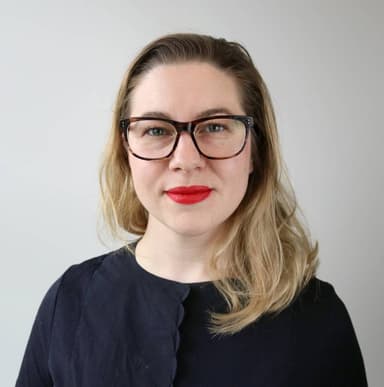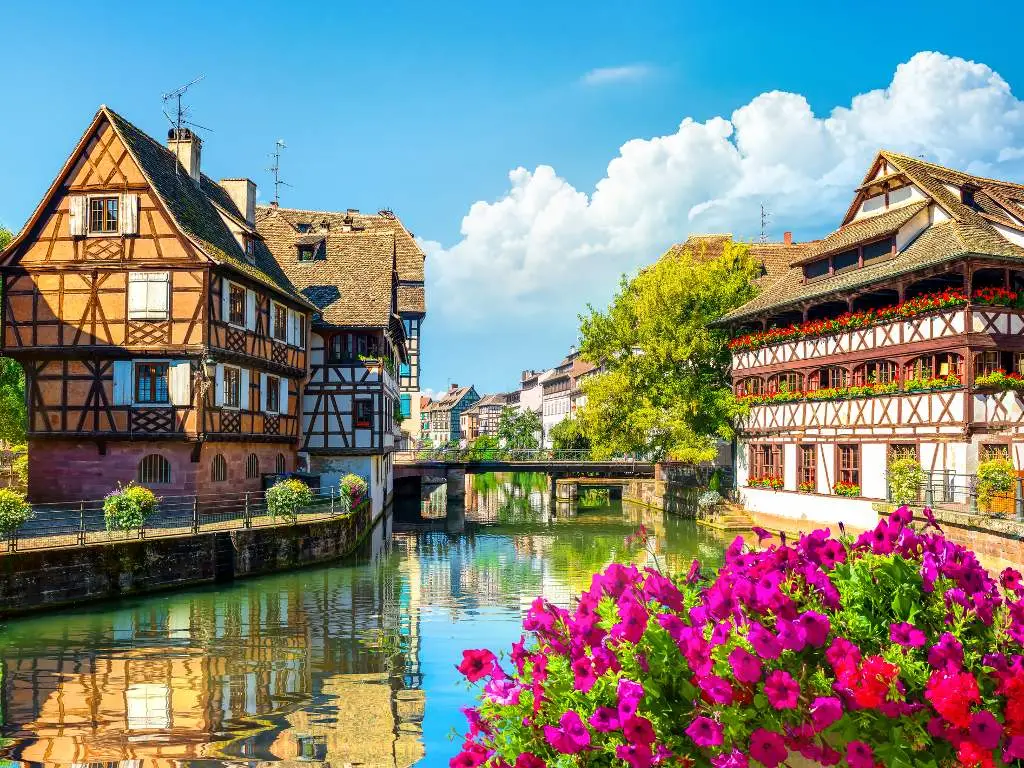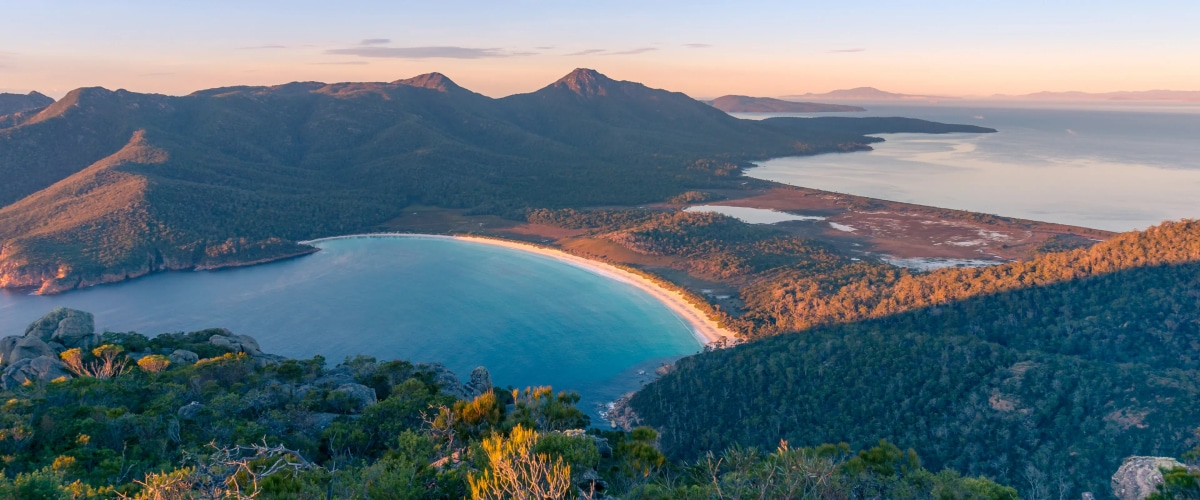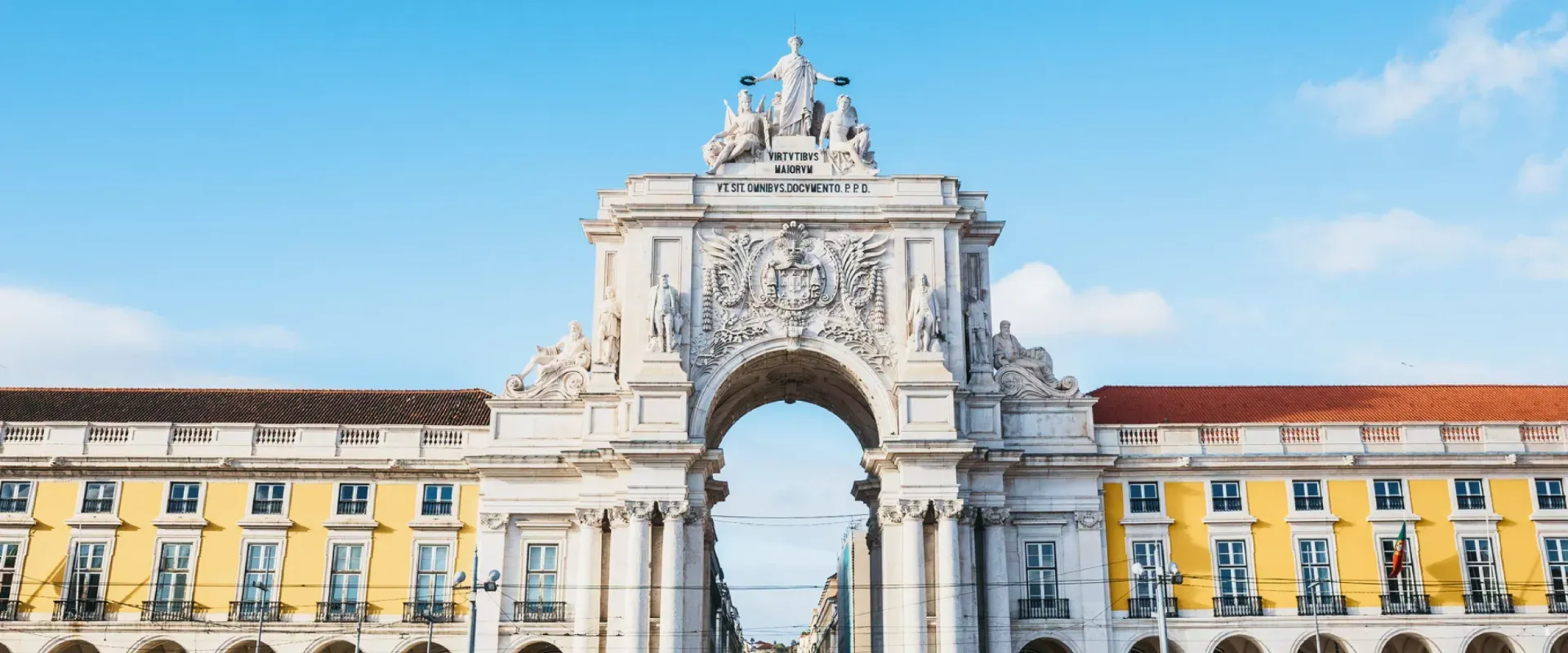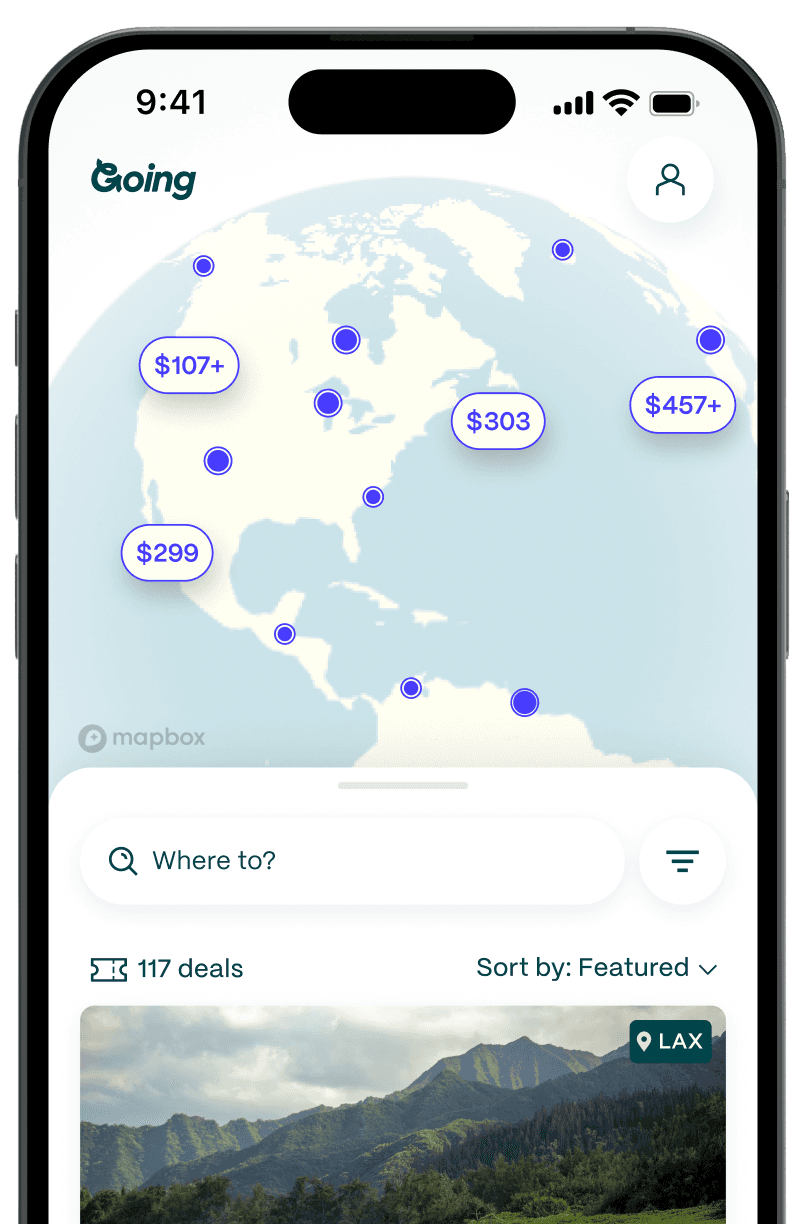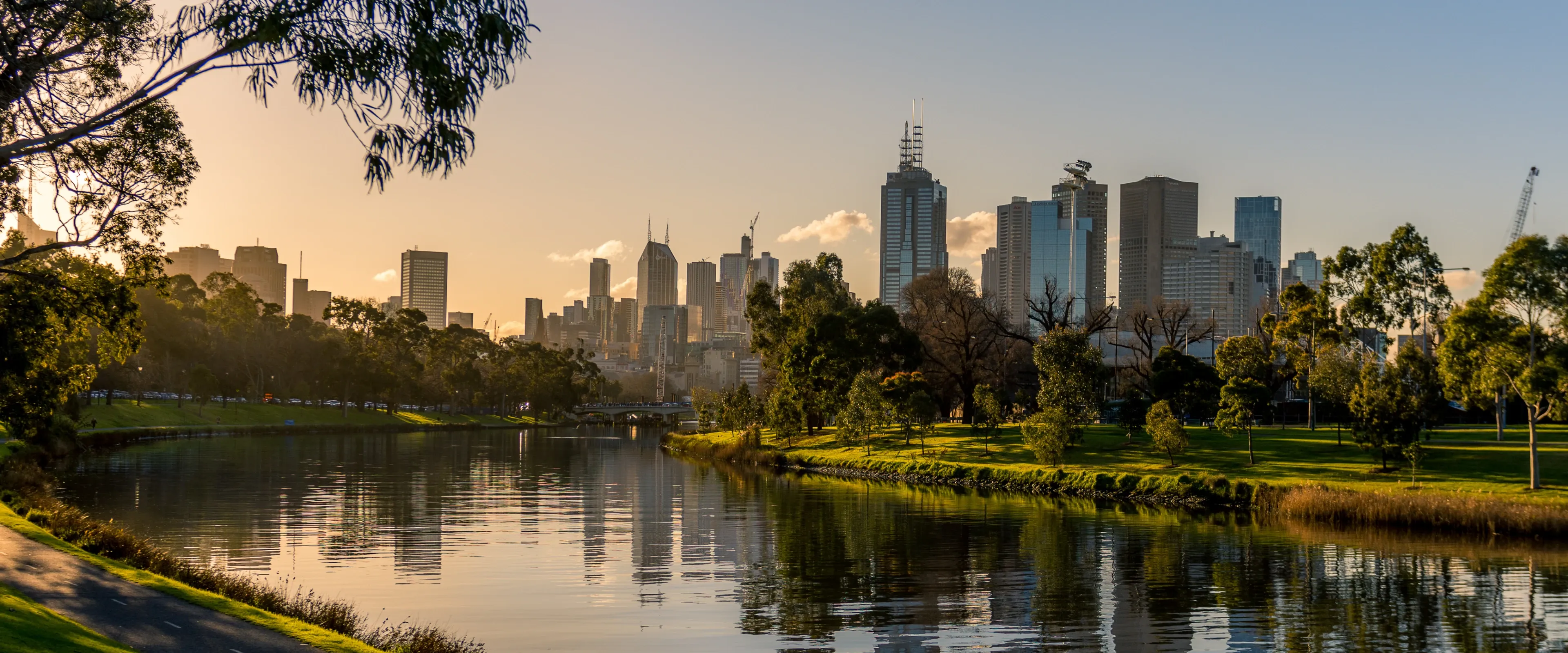
Melbourne: The Australian City That Makes Some of the Best Coffee in the World
In its almost 200-year history, Melbourne, in the state of Victoria in southeastern Australia on the traditional lands of the Kulin Nation, has evolved into Australia’s cultural capital.
The city—Australia’s second biggest—has one of the highest densities of art galleries in the world, and more cafes per person than any other Australian city. It’s no wonder creative types (dressed head-to-toe in black, the city’s unofficial uniform) descend in droves.
Melburnians jest that their city has ‘four seasons in one day,’ and there’s some truth in that statement. While winters are cool and summers warm, we recommend that whatever your plans are, to always take a jacket. It really could be sunny one moment and hailing the next!
Footy fever

In Melbourne, the Australian Football League—usually called ‘AFL’ or ‘footy’—is practically a religion. A bit like a cross between soccer and rugby, the game involves two competing teams trying to kick an oval-shaped ball between goalposts at either end of the field. Players are allowed to touch the ball to ‘punt’ it to teammates, but they’re not allowed to throw it. As the name suggests, the sport is played all over the country, but fans in Victoria, where the game was invented in the mid-1800s, are some of the most vocal supporters.
All winter long, men’s and women’s leagues lace up their boots for four-quarter matches featuring plenty of mud, team-branded knitwear (in the audience), kicking, and handballing. The largest are held at the Melbourne Cricket Ground (MCG), a cultural destination in its own right (it’s the largest stadium in the Southern Hemisphere) and home to the National Sports Museum. If you do get along to a match, indulging in an Aussie meat pie (ground beef and gravy in a pastry casing) is practically an entry prerequisite.
Coffee capital

Melbourne is arguably home to some of the best coffee in the world. When the first wave of post-WWII immigrants arrived from Italy and Greece in the 1950s, they bought coffee culture with them. Before long, the tradition of sipping espresso was as Aussie as a sausage in bread.
In the years since, Melbourne’s coffee scene has evolved into a ‘third wave’ of refined brews served in architecturally designed cafe spaces that draw lengthy queues for fine-dining riffs on avocado toast (a local fave). Some of the top players include Higher Ground in the Central Business District (CBD), and CIBI, a Japanese-styled coffee spot in the back streets of Collingwood, an artsy suburb in Melbourne’s inner north.
Ding ding!

Trams (aka trolley cars) rolled out across Australia in the 1880s, but fell out of favor everywhere but Melbourne when buses became more cost-effective. As Sydney and Hobart filled in their tracks, Melbourne’s growing fleet shaped the city’s center as a place of business while designating its suburbs as residential. Even today, most routes run in and out of the city, but rarely across the ’burbs.
The zero-fare City Circle Tram, serviced by ‘retired’ cars from the 1960s, offers free travel with audio commentary on points of interest along the route which, as the name implies, makes a rough circle around the city center. You’ll soon become accustomed to the ‘ding ding’ sound the metal cars make as they woosh by errant motorists and pedestrians lost in their cell phones.
Festival city

No matter what the season, this city loves to put on a party, and everyone's invited. Every year, events such as the Melbourne International Comedy Festival (held each March–April, it’s the largest stand-alone comedy festival in the world) and the Melbourne Fringe Festival (which attracts 2000+ artists over more than 450 shows in October) draw thousands of people to the city. In fact, before the pandemic, around 5 million visitors attended a festival or event during their trip.
What’s On Melbourne has the latest dates and ticketing info, and many of Melbourne’s best events are free. They’re also a neat way to access some of the city’s most iconic event spaces. The Forum's impressive neo-gothic facade (complete with gargoyles) is worth a look, while Federation Square, a piazza in the heart of the CBD, serves as a hub for events ranging from Good Beer Week to the Polish Festival.
A world of fine food

From dumpling houses in Chinatown to pasta on Lygon Street, Melbourne’s multicultural dining scene reflects the waves of immigration that built the city. With the Gold Rush in the 1850s, Chinese immigrants set up small restaurants to cater to local miners. Today you’ll find much-loved Chinese-Australian inventions such as the dim sim (like a large shumai) and sticky, battered lemon chicken in every suburb. For a modern spin, check out Lee Ho Fook, young chef Victor Liong’s fine-dining homage to his Australian upbringing and Chinese heritage.
Today, Footscray, in Melbourne’s inner west, has a large East African community and is known for Ethiopian cuisine (Ras Dashen is a top pick). Meanwhile, lovers of fragrant noodle soups head to I Love Pho on Victoria Street in Richmond, an inner city suburb nicknamed Little Saigon after waves of Vietnamese immigrants moved into the area after the Vietnam War in the 1970s.
Hit the streets

Melbourne’s ever-evolving collection of street art is one of the largest in the world, with whole laneways—that’s local slang for side street—devoted to spray-painted murals. This is partly due to the city’s geography. With lots of hidden corners and narrow streets, it was easy for street artists to work without getting caught, though these days many of the installations are city-sponsored.
Two of the top spots are Hosier Lane (opposite the Ian Potter Centre, home of the National Gallery of Australia’s art collection) and Meyers Place, where local artist Mike Makatron has painted an urban jungle. Programs such as Flash Forward, which commissioned 40 new installations, are harnessing the talent of local creatives to highlight some of the city’s less well-known spots. Download a free map and see how many you can find.
Turn it up
From jazz basements to rock 'n' roll pubs, Melbourne reverberates with the sound of live music every night of the week (much to the annoyance of locals who complain about the volume, despite choosing to move next to a pub). Check out The Night Cat in Fitzroy and The Toff In Town on Swanston Street for great local and international acts.
Some of Australia’s best musical exports have called the city home, from Nick Cave and Crowded House to Gotye and Courtney Barnett. The most well-known might be ’70s hard rock group AC/DC, who formed in Sydney but based themselves in Melbourne. ACDC Lane, once home to infamous live music venue Cherry Bar, is named in their honor and boasts some excellent music-themed street art, too.
Walk it out

Bordered by bustling St Kilda Road and the winding Yarra River, Melbourne’s Royal Botanic Gardens provide a 94-acre oasis for those who like to stretch their legs. Jogging ‘The Tan,’ a 2.4-mile track that circles the gardens, is a particularly healthful Melbourne pastime.
If you’d like to make a day of it, it takes about three hours to walk the Yarra Trail through the traditional lands of the Wurundjeri people to Dights Falls, the only waterfall in inner Melbourne. The path runs via the Collingwood Children's Farm and the Abbotsford Convent (Australia’s largest multi-arts precinct), which both house quirky cafes and host art and farmers markets.
Good to Know
Is Melbourne expensive?
Melbourne is a relatively expensive city to visit. An average double-occupancy hotel room can cost $180-250 per night, though there are also serviceable rooms available for $60-75 per night. Nice restaurants abound in Melbourne, with a multi-course meal for two starting at $85. You can, however, get a simple meal at a less-fancy restaurant for around $15.
Best time to visit Melbourne
Since it’s in the Southern Hemisphere, Melbourne’s summer high season is from December-February. The best time to visit, October-May, includes summer as well as a bit of fall and spring. Prices are higher and crowds thicker during the summer, but the weather is a strong draw nonetheless. The shoulder seasons of spring and autumn offer an appealing mix of weather that’s still pleasantly warm, prices that aren’t as outrageous, and crowds that are more easily navigable.
What languages are spoken in Melbourne?
The official language of Australia is English, though Australian English has enough of its own slang that you might question that on occasion.
Melbourne with kids
Melbourne is very family-friendly. Australia’s wildlife is famous, and a visit to the Melbourne Zoo gives kids of all ages a chance to see uniquely Australian animals like kangaroos, Tasmanian Devils, wombats, and koalas. The National Gallery of Victoria (NGV) frequently includes a kid-oriented exhibit related to whatever’s on display in the main gallery. Melbourne’s famous Luna Park is an old-school amusement park with fun for the entire family, and, of course, the city’s beaches are always popular with kids.
Melbourne public transportation
Public transportation in Melbourne is excellent. There’s a great network of trams that serve central Melbourne as well as the neighborhoods just outside the city, and there’s even a free tourist tram called the City Circle that connects the main points in the city center. In addition to the tram lines, there are also hundreds of city bus and train lines, all connected by one ticketing system.
Is Melbourne safe?
Melbourne ranks #27 on the Global Peace Index and is generally considered quite safe.
Australia ranks #12 in the world for LGBTQ+ equality, with a score of 84/100.
Getting to Melbourne
- Main airport: MEL
- Average Going deal price for flights to Melbourne: $653 roundtrip
Join Going and get cheap flights to Melbourne and destinations around the world delivered right to your inbox.
Read more about spots in Australia, New Zealand, and the Pacific:
Last updated October 24, 2024

